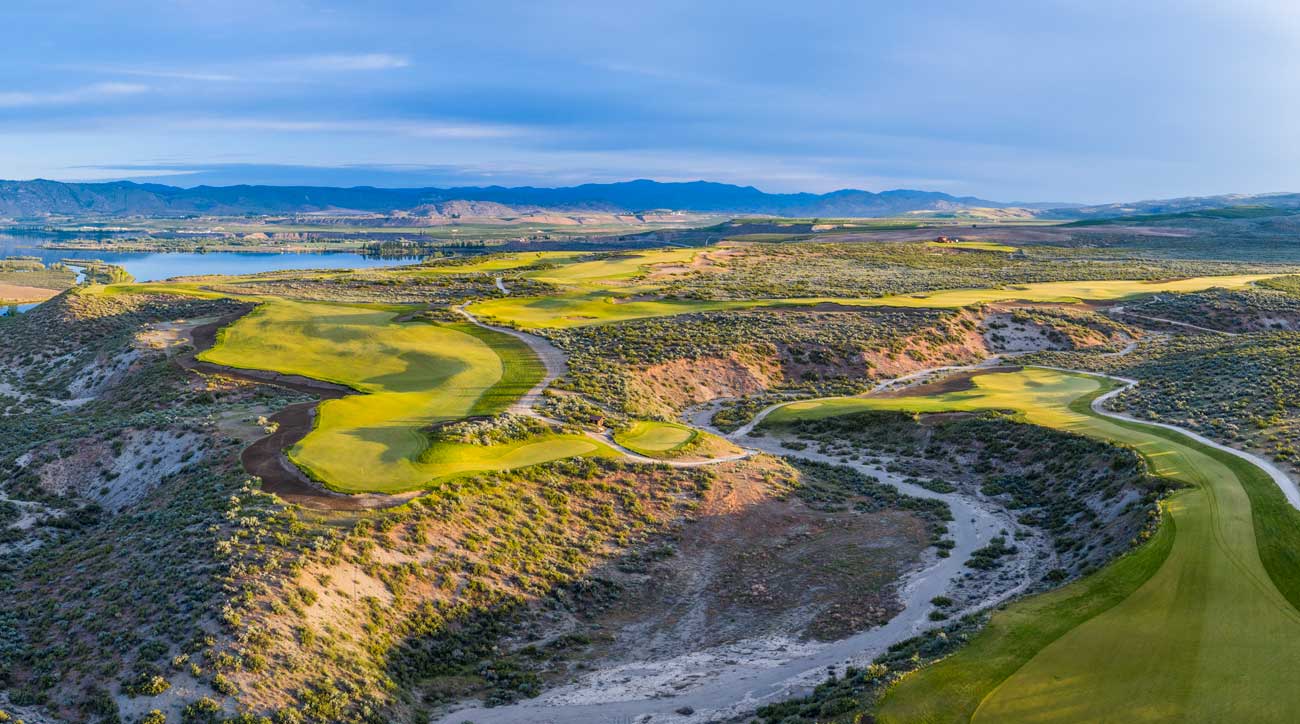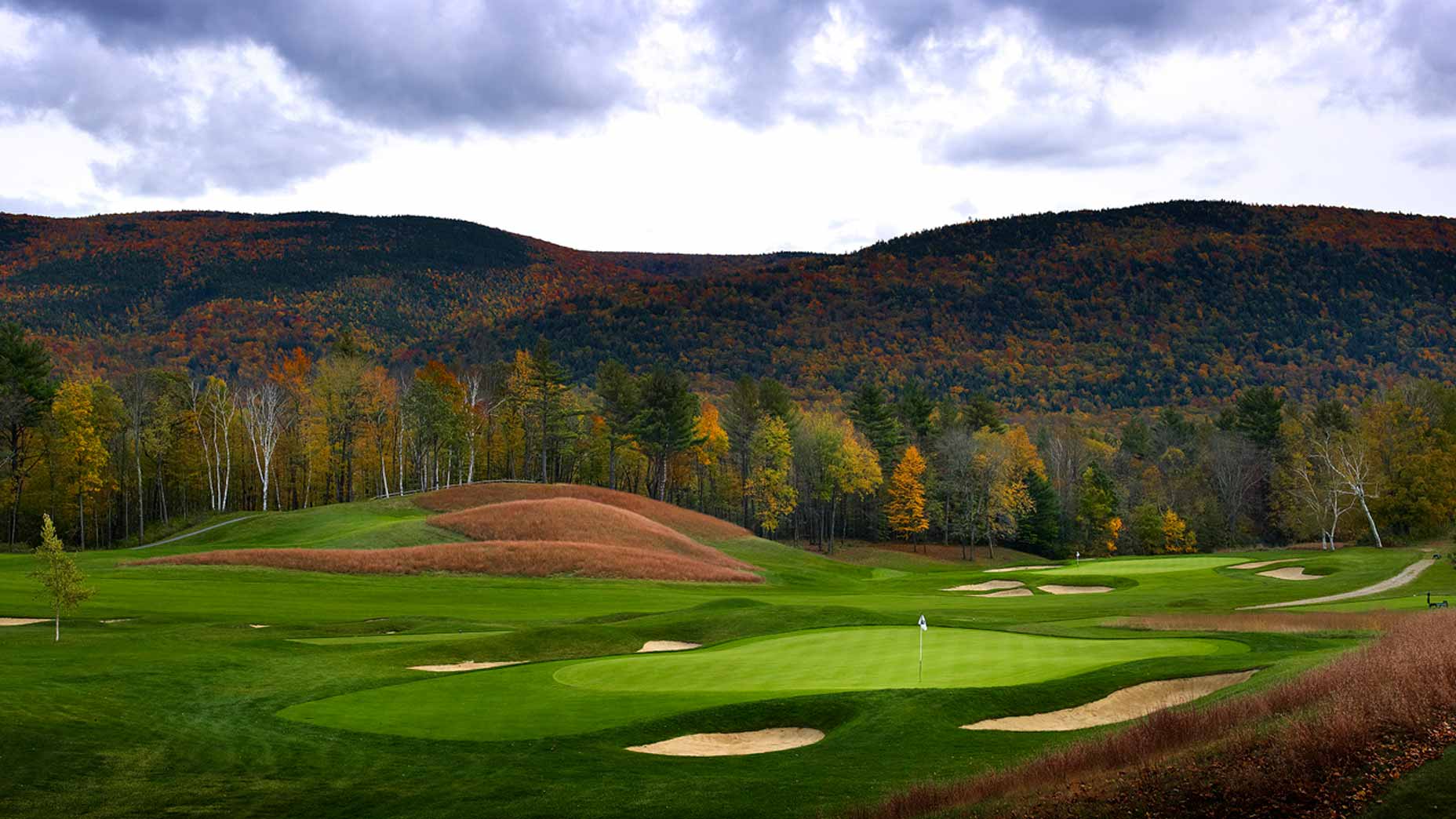Best golf courses in Wisconsin for 2024-25
- Share on Facebook
- Share on Twitter
- Share by Email

Erin Hills in Hartford, Wisconsin
Jerry Rossi
As part of GOLF’s rigorous ratings process for our newly released Top 100 Courses in the U.S. and Top 100 Courses You Can Play rankings, our fleet of 100-plus expert panelists identified the best golf courses in every state.
You can check out the links below to browse all of our course rankings, or scroll down to see the best courses in Wisconsin. And if you’re looking to create your own trip in the future, you’d be wise to let GOLF’s new Course Finder tool assist you. Here, you can toggle all of our lists — Top 100 public, best munis, best short courses, best par-3s and more — or filter by price to create the perfect itinerary for your next trip.
GOLF’s other course rankings: Top 100 Courses in the World | Top 100 Courses in the U.S. | Top 100 Courses You Can Play | Top 100 Value Courses in the U.S. | America’s Best Municipal Courses | The 100 Best Short Courses in the World
Check out our all-new travel podcast Destination GOLF. Listen and subscribe wherever you get your podcasts: APPLE | SPOTIFY | IHEART | AMAZON

The best golf courses in Wisconsin (2024/2025)
SYMBOL GUIDE
# = Top 100 Course in the U.S.
Y = Top 100 You Can Play in the U.S.
V = Top 100 Value Course in the U.S.
P = Public/Resort
Ed. note: Some courses were omitted from our rankings because they did not receive enough votes.
1. Lido (Rome) [#, Y, P]

The Lido, on Long Island’s South Shore, opened for play in 1917, the work of C.B. Macdonald and Seth Raynor. The course met an unkind fate in the 1940s, but not until luminaries like Bernard Darwin had lavished praise on it; Darwin said he thought Lido was the best course in the world “as a battlefield for giants.” Well! Some eight decades later Michael and Chris Keiser decided to recreate the course adjacent to their Sand Valley Resort. Key to the equation was Peter Flory, who open-sourced hundreds of vintage photos of the original Lido and fed them into a software program that modeled the new Lido as accurately as possible. The Keisers then hired Tom Doak and Brian Schneider (who spent more than 230 days on-site) to build the course. This process included the use of GPS bulldozers, though discretion by Doak and Schneider was certainly required in getting the green contours just right. The scale of the course, the depth of its hazards and the size of the greens, which average over 12,000 square feet, is dazzling. Almost all of the great template holes are represented, from the Alps 10th to the Redan 16th, making this course a strategic marvel. Panelist Clyde Johnson calls Lido the “ultimate IQ test for golf-course architecture.” One of America’s great designs is back!
2. Whistling Straits (Sheboygan) [#, Y, P]
Home of the 2004, ’10 and ’15 PGA Championships, this 1998 Pete Dye design on Lake Michigan was once a poker-table-flat military training base in World War II. Eventually it became a site for illegal dumping of toxic waste. Dye and owner Herb Kohler engineered a mind-boggling cleanup, moving 3 million cubic yards of dirt, trucking in 7,000 loads of sand to create the hills and bunkers and relocating the bluffs back off the shore. Kohler told Dye “I want the course to look like it’s in Ireland.” Mission accomplished. The 2021 Ryder Cup played here highlighted what a great match-play course it is, too, with its plethora of ½-par holes. Its set of par-3s is virtually unmatched and is complemented by a slew of other standout holes that come in all shapes and sizes, including the long par-4 4th, the short par-4 10th with its central hazard, and the par-5 11th, which rivals any par-5 that Dye built over his six-decade career.
3. Milwaukee (River Hills) [#]
Designed by C.H. Alison, Milwaukee Country Club is a charming old-school layout that challenges the modern player with fast greens and deep bunkers. You walk out the men’s locker door and — boom — you’re standing on the first tee. A series of stout two-shotters gets the round underway while the middle section of the course (especially holes 8-12) enjoys a spectacular component courtesy of the Milwaukee River and its valley. The course gallops home at 17, a brute of an uphill one-shotter, and 18, with its green featuring a wicked false front.
4. Lawsonia – Links (Green Lake) [#, Y, V, P]

After years of course improvements helped bring it out of the shadows, Lawsonia no longer counts as a sleeper. But it still qualifies as one of the country’s greatest steals. Golden Age maestros Langford and Moreau spent some $5 million in 2024 dollars to produce this literally groundbreaking Wisconsin design. With the help of steam shovels, they built fairways with bedeviling browns and greens with remarkably bold contours. Of the many superb holes, the par-3 7th rightly gets the most attention, in part because of the story behind it. Rumor is that a boxcar is buried beneath it. Given its bulging surface and the 20-foot drop-off along its front-right side, that’s easy to believe.
5. Sand Valley – Sand Valley (Nekoosa) [Y, P]
A Midwestern production from the same Keiser family that gave us Bandon Dunes, Sand Valley lacks an ocean but still has much in common with its coastal counterpart. On the prehistoric sand dunes of central Wisconsin, Bill Coore worked his trademark magic, routing a fun, firm and fair course around a heaving canvas. After an opening tee shot from a massive dune dubbed the Volcano, Sand Valley bucks and rolls along a scenic property, showcasing majestic bunkers, delightful contours and, on the par-3 17th, one of the game’s great punchbowl greens.
6. Erin Hills (Hartford) [Y, P]
Erin Hills is a modern course whose foundations were laid eons ago, when glaciers sloughed their way across central Wisconsin, roiling the landscape in their wake. Far more recently, Michael Hurdzan, Dan Fry and Ron Whitten took their turn, shaping a burly but graceful layout where Brooks Koepka won the 2017 U.S. Open, the first of his five majors. Stout as it is, the course also poses subtle questions, as on the 2nd hole, a short par 4 with a tiny, tiered green. And the back nine is pure elegance, with exquisite undulations that are perhaps most striking on the tumbling fairway of the 12th hole.
7. Sand Valley – Sedge Valley (Nekoosa) [Y, P]

In his long and heralded design career, Tom Doak has pretty much done it all. What remained on his wish list was to build a course inspired by the great heathland layouts of England. At Sand Valley, he finally got his chance to channel his inner-Harry Colt. A clever, compact complement to the resort’s three other 18-hole courses (Sand Valley, Mammoth Dunes and semi-private Lido), Sedge Valley tips out at a shade under 6,000 yards. But length is not the best tell of its tape. Forgiving-looking fairways are wonderfully deceptive, with slopes and brows that place a premium on finding the right angle. Greens, too, have ample movement, and approaches to them are often complicated by rises in the land that shroud the target from view. Sedge Valley is a reminder that size does indeed matter, and that bigger isn’t always best.
8. Pine Hills (Sheboygan)
9. Sand Valley – Mammoth Dunes (Nekoosa) [Y, P]
True to its name, this broad-shouldered design takes advantage of some of the largest dunes in the vast sand barrens of central Wisconsin, with a routing that winds around a towering V-shaped wedge. But if the scale is imposing, the course is not. Once known as a staunch defender of par, McLay Kidd intentionally softened his approach here, with fairways so wide they are difficult to miss, and myriad ground game options that allow for friendly access to generous greens. The point here is beauty, not intimidation, and the end result is terrific fun.
10. Blackwolf Run – River (Kohler) [Y, P]
Whistling Straits claims the greatest wow-factor, with two miles of frontage along Lake Michigan, but this inland Dye layout might have just as many ardent fans. Built a decade before Whistling, the River course occupies one of the best wooded parcels that Dye was ever given, studded with hills and stitched through by a creek. The famed architect also benefited from an owner who offered him carte blanche, allowing Dye to create one of his most challenging tests. The demands come in many shapes and sizes, from angled greens set on plateaus to risk-reward par-5s with water lurking. Among the toughest shots is on the par-3 13th, which plays over a bend in the river with a large tree looming on the left. Though its branches have been cut back in recent years, it remains a nightmare for righthanders who favor a fade.
11. Blue Mound (Wauwatosa)
12. West Bend (West Bend)
13. SentryWorld (Stevens Point) [Y, P]

In 2013, Wisconsin native Jay Blasi, working in collaboration with Robert Trent Jones Jr., rerouted the SentryWorld design by implementing unused land throughout the property. The new par-3 3rd was once just a stand of trees, and the new par-3 12th once a lone peninsula in the middle of the swamp. Now these holes smartly connect the layout. One of Blasi’s favorites additions is the par-4 15th, the preferred angle for the approach protected by a strategically placed, right-side fairway bunker. Superintendent Matt Smith has catapulted SentryWorld into one of the best maintained courses in the country, helping it land the 2023 U.S. Senior Open.
14. Blackwolf Run – Meadow (Kohler)
15. Club at Lac La Belle (Oconomowoc)
16. Steven’s Point CC (Stevens Point)
17. Whistling Straits – Irish (Sheboygan)
18. Kenosha (Kenosha)
19. Bull at Pinehurst Farms (Sheboygan Falls) [V, P]
20. Washington County (Hartford)
How we rank our courses
For our newly released Top 100 U.S. and Top 100 You Can Play lists — a process that helped us create 50 best-in-state rankings — each panelist was provided a ballot that consisted of 609 courses. Beside the list of courses were 11 “buckets,” or groupings. If our panelists considered a course to be among the top three in the U.S., they ticked that first column. If they believed the course to be among Nos. 4-10, they checked that column, followed by 11-25, 26-50, and so on out to 250+ and even a column for “remove.” Panelists were also free to write in courses that they felt should have been included on the ballot.
Points were assigned to each bucket; to arrive at an average score for each course, we divide its aggregate score by the number of votes. From those point tallies, the courses are then ranked accordingly. It is an intentionally simple and straightforward process. Why? Because it historically has produced results that are widely lauded. Like the game itself, there’s no need to unnecessarily complicate things or try to fix something that already works so well.
The key to the process is the experience and expertise of our panel. Hailing from 15 nations and all the worldwide golf meccas, each of our 127 handpicked panelists has a keen eye for architecture, both regionally and globally. Many of our panelists have played more than 1,000 courses in 20-plus countries, some over 2,000. Their handicaps range from +5 to 15.
Because the nature of course rating is so intensely subjective, no one opinion carries the day. The only way, then, to build meaningful consensus is to incorporate this diversity of panelists and experiences into one ranking. Need help unriddling the greens at your home course? Pick up a custom Green Book from 8AM Golf affiliate GolfLogix.
Latest In Travel

Golf.com Editor









